About this Blog: The Changpa tribe is a semi-nomadic tribe found in the high altitude Changthang region of eastern Ladakh. They are known for rearing the Changthangi Goats or the Pashmina goats that yeild the fine wool to produce the exquisite fabric Pashmina. In our last trip to Ladakh, we were fortunate to spend a couple of days with a Changpa family. In this blog, we bring to you about this elusive Changas of Ladakh, tehir life and hardships and future of the tribe and Pashmina. Read on!
It was snowing outside and I could hear the howling of the winds from my makeshift bed. I was quite sure that the temperature was sub-zero and I was feeling a chill even with a couple of heavy blankets on me and praying for something hot to drink. If you are wondering why so – we were actually stranded at a remote place in Changthang Valley of Ladakh banking on the hospitality of the nomadic Changpa tribe.

It was my plan actually. To visit Tso Moriri Lake and meet the people who are behind the Pashmina wool. We met the Changpas and their herd of goats. But we were also stranded somewhere near Sumdo, on the way towards Tso Moriri. It was only the twelfth day of October and it was snowing heavily. The road towards Tso Moriri and Korzok was blocked due to snowfall and so was the road towards Leh. This incident also gave us an opportunity to spend a couple of days with a Changpa family and get to know them.
Read on to know about the life of the hardworking nomadic Changpa tribe found in the Changthang Valley of Ladakh.
Pashminas and Changpas
Have you ever felt the softness of a cashmere or a Pashmina? Known as one of the finest fabrics in the world, this exquisite fabric is mostly made into shawls, scarves and stoles. The word Pashmina originates from the Persian word “Pashm”, which means wool.
Pashmina is known as the ‘royal fabric’ since a long time. Mughal Emperor Akbar was an admirer of Pashminas and he introduced the concept of Dushala, a method of double weaving where both sides of the shawl can be used. He also exported it to the Ottoman Empire in the sixteenth century where it became a rage by the eighteenth century.

French emperor Napoleon Bonaparte was so much enamored by Pashminas that he had gifted one to his wife Josephine.
It is obvious that the Pashminas became more sought after because of the exquisite work of Kashmir’s exceptionally skilled weavers and artisans. It is one of the reasons that Pashminas are often said to be a product of Kashmir. Yes, the final product (shawl or stole) is still made in Kashmir. However, the wool with which it is made is from is obtained from the undercoat of a specific kind of goat, known as the Changthangi goats found in the high altitude Changthang region of eastern Ladakh.
It is said that the cold-shielding undercoat of the Changthangi goat is 8 times finer than human hair.
The people tending to them are known as the Changpa tribe.
Changthang – Home of Changpa Tribe in Ladakh
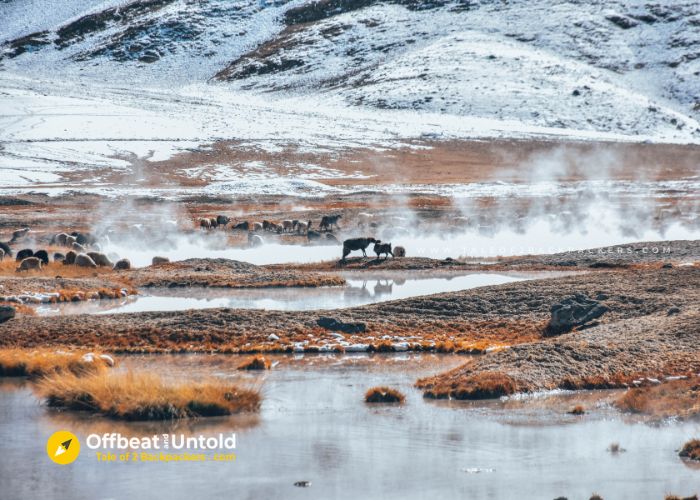
Changthang region is located in the eastern part of the Union territory of Ladakh whose altitude ranges from 4000 to 7000 metres above the sea level. It covers a vast area of about 22,000 square kilometers having a population of nearly 14000 according to Census 2011, making it one of the sparsely populated regions in India.
Geographically, the Changthang Plateau is a mosaic of wetlands and steppe grasslands situated between the Himalayan and Karakoram ranges and extending upto Tibet. Along with the marshy stretches, Changthang area is also dotted with several high-altitude lakes, the most famous being Tso Moriri, Tso Kar and the Pangong Tso. You will also find sand deserts in the region and the plateau is crisscrossed by Indus and Hanle rivers. No wonder Changthang sustains a unique diversity of plants and animals.

Changthang is the only known breeding site for the black-necked crane bar-headed goose. It is also the common habitat for snow leopards, Tibetan grey wolf, Kiang or Tibetan wild ass, Tibetan gazelle, argali and many more. We did get a glimpse of Tibetan wolf on our stay with the Changpas and saw several Kiangs.

Not only the Changthang region is ecologically diverse, but is also culturally rich.
Who are the Changpa Tribe?
The Changpas or the Changpa tribe of Ladakh are a semi-nomadic tribe living in the stark and stunning Changthang plateau that is spread across parts of eastern Ladakh and Tibet. They have been living here, almost 16000 feet above the sea level, for centuries, while shepherding the world-class Pashmina rearing goats, also known as Changthangi or the Changra.

Living in sub-zero temperatures with bare minimum necessities, the Changpa tribe is an example of the indomitable spirit of human kind. The Changpas raise yaks, sheep and horses and annually migrate in search of green pastures for their livestock. Followers of Buddhism, you can often see them with a beaded necklace or a prayer wheel in their hands. Living a nomadic life on one of the toughest terrains and producing one of the finest wools, the life of the Changpas is beyond fascinating.

The Changpas ethnically belong from Ladakh. However, there is another group belonging to Tibet Autonomous Region who had migrated to India after the Chinese takeover of Tibet. So along with Ladakhis, you will also find Tibetan refugees who have relocated in parts of Ladakh.
Changpas – Living in Harmony With Nature
Away from the modern lifestyles and technology of the present-day world, the Changpa tribe of Ladakh lives in perfect communion with the nature. There is no proper mobile network here. Internet is like a dream. Unlike us, who depend on technology for almost everything, the Changpas rely on their senses. The lengthening of shadow on the cliffs informs them about the season. The gradual turn in the direction of the winds, the yellowing of the grasses tells them that it is the time to move towards greener pastures.

Their life, without any doubt, depends on maintaining the right balance with nature. And the Changpas have not achieved these sensory powers overnight. It is years of tradition and observing the changes in nature that makes them so accurate with their decisions. After all, in a place where winter temperature can go down as low as minus 40 degrees Celcius, these decisions become the matter of life and death.
Livelihood of the Changpa Tribe
The Changthangi Goats are the main source of income for the Changpa tribe. It also contributes a considerable chunk of revenue for Ladakh as well, second only to tourism.

The vast barren lands are not conducive for agriculture. People grow basic crops like barley and peas, but primarily for their own sustenance, religious ceremonies and for the consumption of the animals. The Changpas are traditionally nomadic pastoralist and depend on their livestock for their needs and livelihood. They rear goats, sheep, yaks and horses for their daily sustenance and living. Their major source of income, is trading in the wool reared from the pashmina goats.
Religion and Beliefs
The Changpa tribe understand nature. And they live in harmony with the nature and the spirits. They believe that guardian spirits have a ubiquitous presence. These guardian deities protect them, their animals, pastures, lands, mountains and everything around. Being the followers of Tibetan Buddhism, they are also followers of non-violence.
The Changpas believe that all the natural occurrences as well as human activities happens to appease the spirits or to seek penance for their past sins. Snowing on the mountains, birth and death, herding of livestock, management of pastoral lands all occurs to in accordance to the will of the spirits of the land.

The relationship between the Changpas and their animals are sacred. Their lives revolve around them. They believe that their animals help them communicate with the guardian spirits. If their herd is lost, then communication with the supreme power is also lost.
Changpas and Their Symbiotic Relation with Nature
The Changpa tribe like many other indigenous people believe in a symbiotic relationship with nature. Their way of life is embedded in ecological pragmatism. They belong to nature and not the other way around.

It is this responsibility towards ecology that prevents them from settling to the origin of springs. In cold deserts with little rainfall, snowfall and glaciers are the main source of water in the springs keeping the marshland dense. Keeping the source of water pure and clean is a responsibility that they have taken upon themselves.
The Changpa tribe practice an age-old tradition of rotational grazing that prevents overgrazing and also helps in conserving the fodder. Their choices of pastures are fixed. For finding food for their livestock, they move to newer locations every couple of months, but along their fixed path. The periods might differ based on the pasture and water availability, but the rotation is fixed. The decision of pasture movements is taken by the yulpa (village assembly) headed by the goba (village chief).

Life of the Changpas
The men usually take their herds of goat and sheep to the pastures. They often cross mountains looking for fresh pasture. As the herds ascend the mountain, the shepherds usually direct them by whistling or making sounds.
It is indeed a tough job to maintain the herds on the mountainous terrains. One has to be extremely fit and sure-footed. While the herds graze on a pasture, the shepherd usually makes tea or sings happily. They have to constantly keep an eye on the animals so that they do not stray away or mix with other herds. We also saw some of the Changpas put a specific colour on the horns of the herd to distinguish them.

The Changpa families usually have a wild dog. They need the dogs as they protect the changthangi goats and sheep from snow leopards and wolf, especially in the night.

While the men are away with their goats, sheep and yaks, the women remain in the camps doing their daily chores like cooking food, milking the sheep, washing clothes by the stream and whatnots. The women also collect dung of sheep and goats, dry them and store them to use as fuel. They keep a good stock for the winters as well.
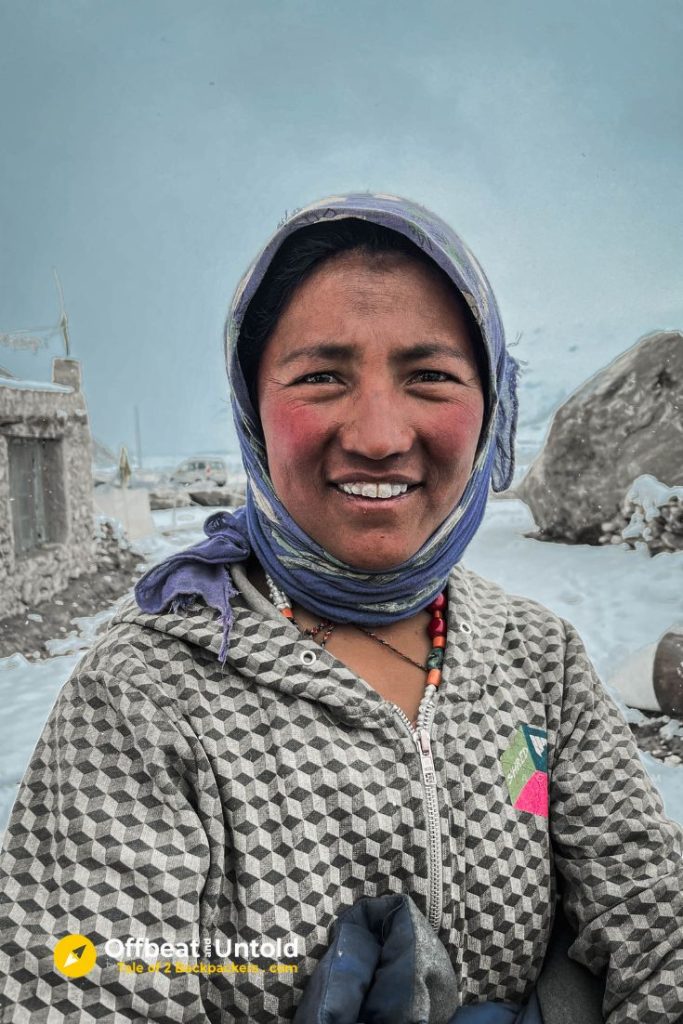
The wool is sheared from the Changthangi goats during the summers. It is the time when the hair rises above the skin and is no longer a winter coat gripping the body. The Changpas held a ceremony to begin the process. The fleece is sheared in parts so that the animal can adjust to the climate. After shearing, the wool is beaten which fluffs up the fibers. They are then cleaned of dirt and debris.

On a usual day at the encampment, you can see the Changpa women cook and clean. Some look after their little children while others are busy with weaving, spinning and other chores.
And in the distant mountain slopes, you will see the dots of goats and sheep grazing along the fragile greens.
Spending a Day With a Changpa Family
That is what we observed on the second day when it stopped snowing. The day we arrived at Sumdo, we could not go further because of the snowfall. This gave us a chance not only to stay, but also to observe the life of a Changpa family. Our host Tenzin was in his forties and usually takes his goats and sheep for grazing every morning. Dolma, his wife is the one who looks after the place.

Tenzin had to come back early that day with the flock as it had started snowing. We saw him herding his flock inside the enclosure for the cattle.
It snowed the entire evening and we simply sat huddled in the cold. Without electricity and mobile network. We made the best of the situation and went to visit Tenzing and Dolma. While Tenzing was sitting and spinning a prayer wheel, Dolma was preparing butter tea. She offered us a cup and we were happy to have it in the cold. The evening was spent seeing Dolma cook Thentuk. She even showed me how to cook. Tashi, our friend was there as the translator whenever language became an issue.
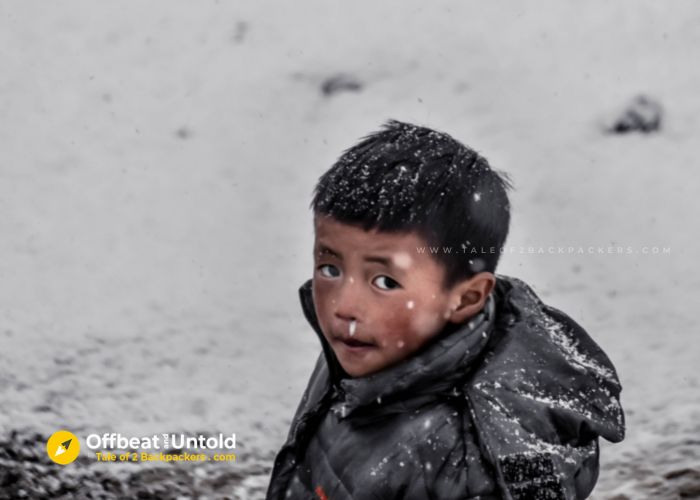
Tenzin has 250 changra or pashmina goats. He goes out every morning with his cattle in search of pastoral lands. But negotiating pastoral lands and water has become more difficult. On top of that, pashm (wool) from his 250-odd goats does not give him much. A single goat gives about 250 gm of pashm. And one kilogram of pashm sells for about three thousand rupees only.
Still, he continues to produce pashmina, which is an almost an act of excellence for the last 1200 years. Though he often thinks of giving up livestock rearing like many other nomadic families in the region. Tenzin and Dolma has two sons and two daughters. Both their sons work in Leh and one of their daughters’ studies in Dharamshala, the other in Leh.
Moving Out of Changthang
And we observed that this situation is common with most of the Changpa families. When we visited the encampments, we hardly saw any teenagers and young people. There were toddlers, little boys and girls, middle-aged and older people to be seen around.

The only youngsters we saw were the labourers working on building roads or removing the snow. Most of the youngsters have descended to Leh and other hilly regions for better prospect of educations. Others have moved to Leh for employment. This is, practically the first generation Changpas who have ventured into the outside world to have an encounter with formal education.

Modernity has already touched the lives of the Changpas. The people who used to solely depend on the Bukharas for cooking and keeping their tents warm use gas stoves these days. They also light bulbs with the help of battery. Yak and horses are no longer their mode of transportation. Bikes and cars have found their way.
Problems Faced by the Changpa Tribe in Changthang
The Changpa people, themselves, migrating to cities and towns is just the tip of the iceberg. There are several reasons why the Changpas are looking for better opportunities themselves.
The Changpa way of life based on spatial and temporal ideas have witnessed a major shocks and disruptions in the last few decades. Climate changes, influence of modern ideas along with encroachment of land by the army and outsiders have all played a major role in the change in the life of the Changpa tribe. There has also been a lot of socio-political upheavel in Ladakh.
Climatic Changes
The climatic changes pose a lot of problems for the Changpa shepherds. Pastures and snowfall are both reportedly declining. Glaciers are receding, springs are drying up, marshlands are becoming less dense resulting in poor quality of pastures. The peace-loving and god-fearing Buddhist Changpa tribe believe that they have disturbed the guardians of the land.
Livestock Changes

Another problem is the reduced diversity of the livestock. The wool of the pashmina goats fetches more money. So, the people tend to keep more of the changthangi goats in their herd. But the mortality rate of the changthangi is also high during the winters. The people also do not keep yaks anymore. Once upon a time, yaks were used for transportation. But these days, the Changpas have their own car for moving around. Yak manure is a useful manure for maintaining the pastures. As technology is easing the life, it is also one of the reasons of the many problems Pashmina faces.
With the decrease in and proper pasture lands, the livestock is moving towards the marsh lands. That is affecting the wildlife and the migratory birds.
Border Issues

And then there is the problem of land encroachment. After the border clashes with China in 2020, the Indian army has taken over stretches of land.
Earlier, border was just a concept for the Changpas. Historically, the Changpas of Ladakh used to migrate with their herds into Tibet. But after China took over Tibet, this route has been closed since long. But these days, the Changpas are denied access to many of the pastures by the army due to the land’s proximity to Chinese borders.
Threat of Synthetic Products
This is not the only problem that China poses. While Pashmina retains it allure, not everyone can afford it. And now it faces a stiff competition in the form of cheap synthetic wool made in China!
However, the main reason for the decline of Pashmina trade is the exposure of the Changpa tribe, especially the younger generation to the outside world. As I mentioned before, the youth are moving out of Changthang to Leh and other cities for better opportunity at education and job.

It is estimated that nearly 2500 families engage in the production of Pashmina wool in the Changthang region. But the numbers are decreasing.
The Government plans to provide incentives to the Changpa tribe, build R&D centres, set up better infrastructures, schools and medical facilities in Changthang. We even saw concrete houses on our way towards Tso Moriri, but all of them were abandoned. It might be that the efforts by the government is not reaching to the locals.

In Conclusion
It is clear that the present generation is neither invested nor interested in carrying forward the age-old tradition of herding and living a nomadic life. Very soon, the Changpas of Ladakh will become a disappearing tribe and the centuries old art of producing pashmina will remain only in stories. You cannot really fault the Changpas to dream of a better life. Is it the price of progress? What do you think?

A few Trivia about Changpa Tribe and Pashmina
- Raw pashmina sourced from the Changpa tribe, typically sells between Rs.3000 to Rs.4000 per kilogram.
- After dehairing and cleaning, the material is converted into wool, which sells at between Rs. 18000 and Rs.20000 per kilogram.
- One kilogram of raw Pashmina yields about 250 gm of fine wool.
- The wool is then converted into yarn of similar quantity either by machinery or manually. This is then made to weave shawls and stoles and other fabrics.
- A shawl typically requires 200 gm of pashmina yarn and sells between Rs.10000 to Rs.12000.
A Few More Pictures of the Changpa Tribe & Pashmina Goats








Hope you found this article interesting? What are your thoughts about the Changpa tribe of Ladakh? Please let us know in the comments below.
If you liked this post, please share it with your family, friends and neighbours.
Pin it for a later read!!



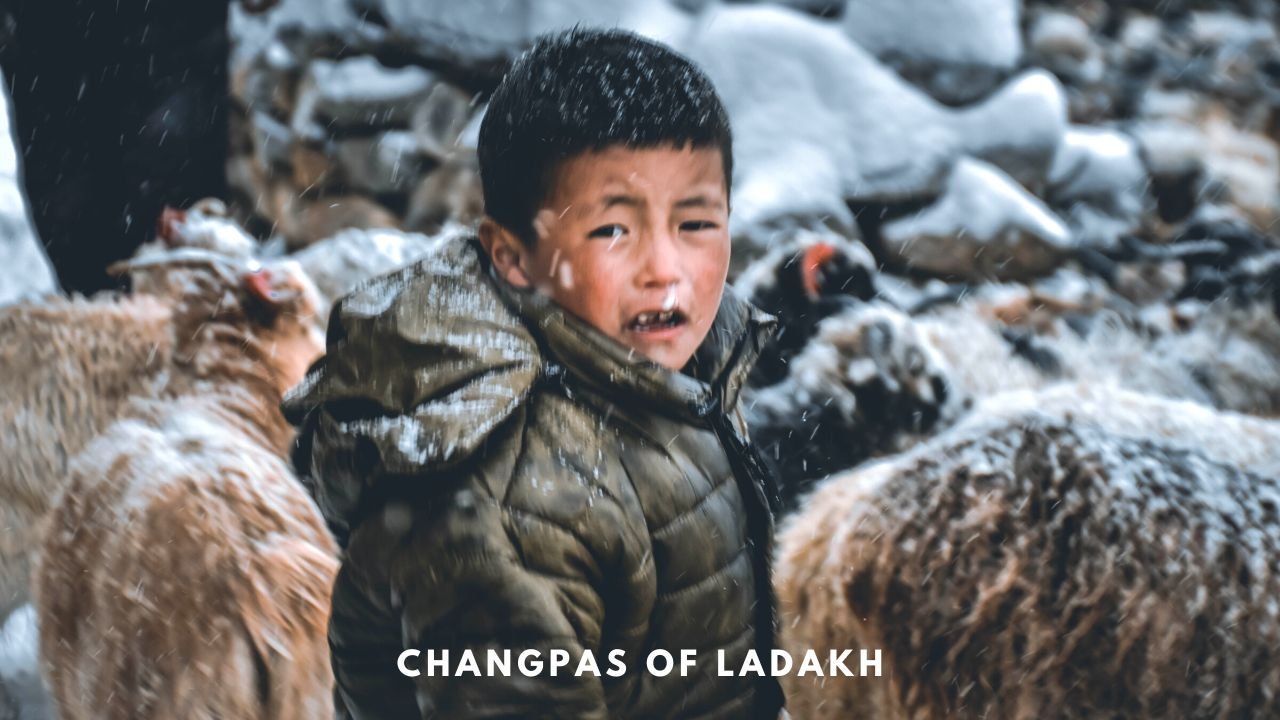

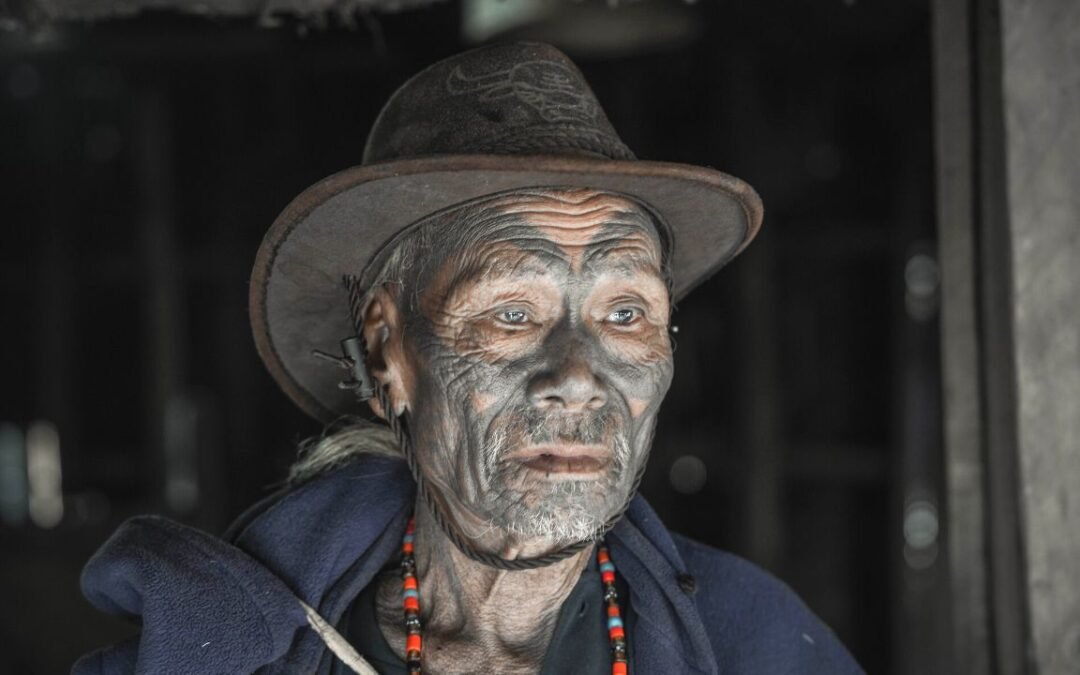
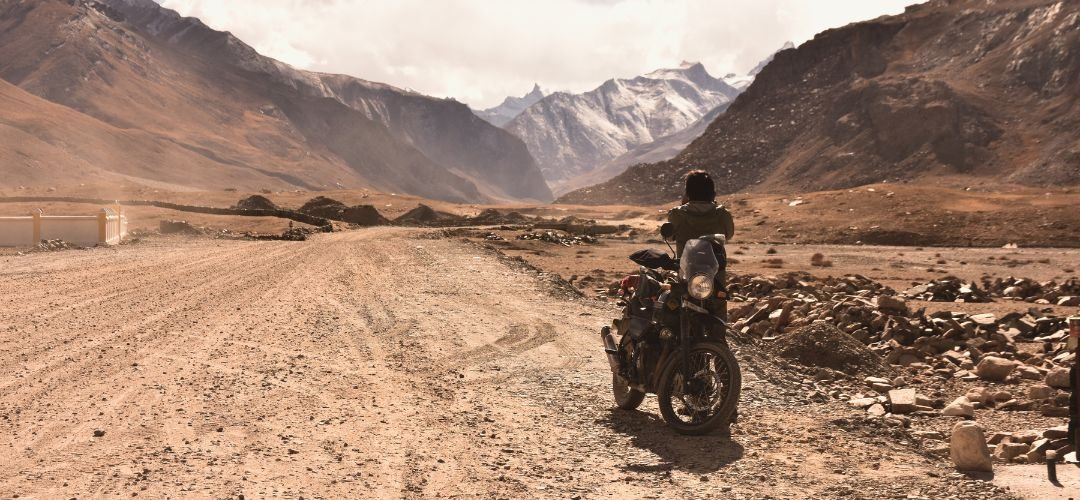
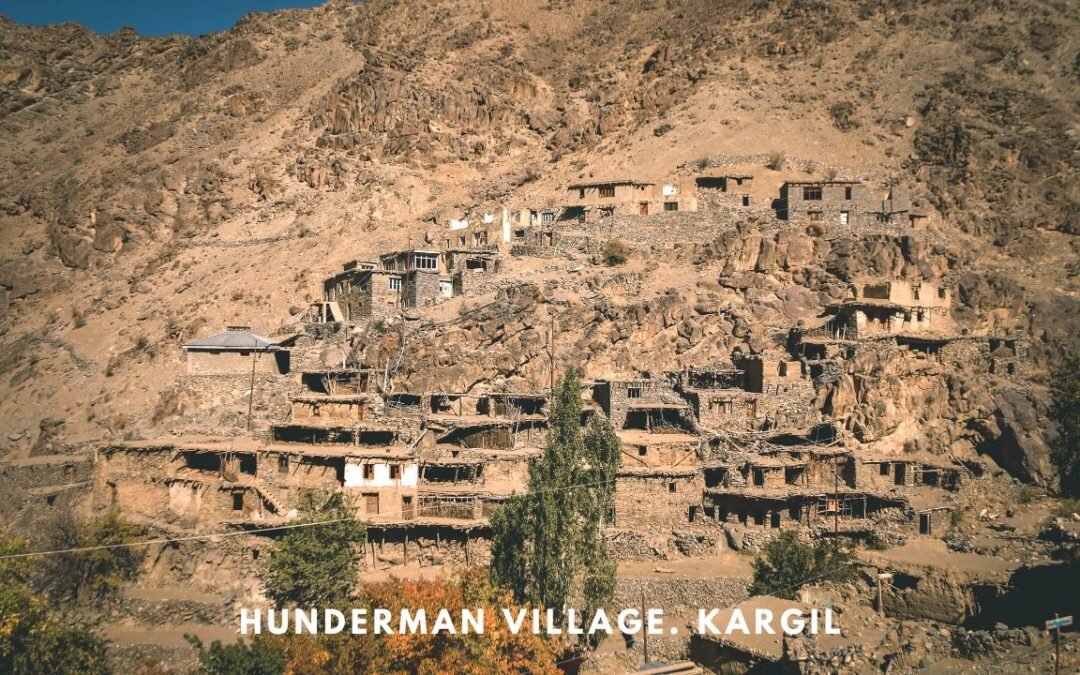



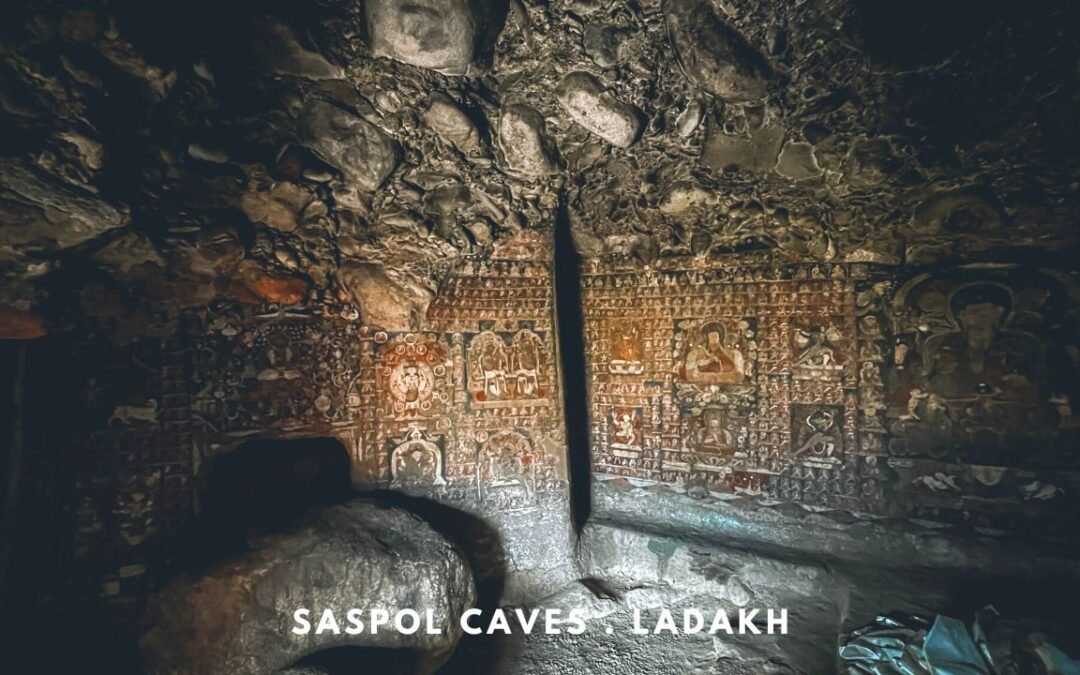

0 Comments